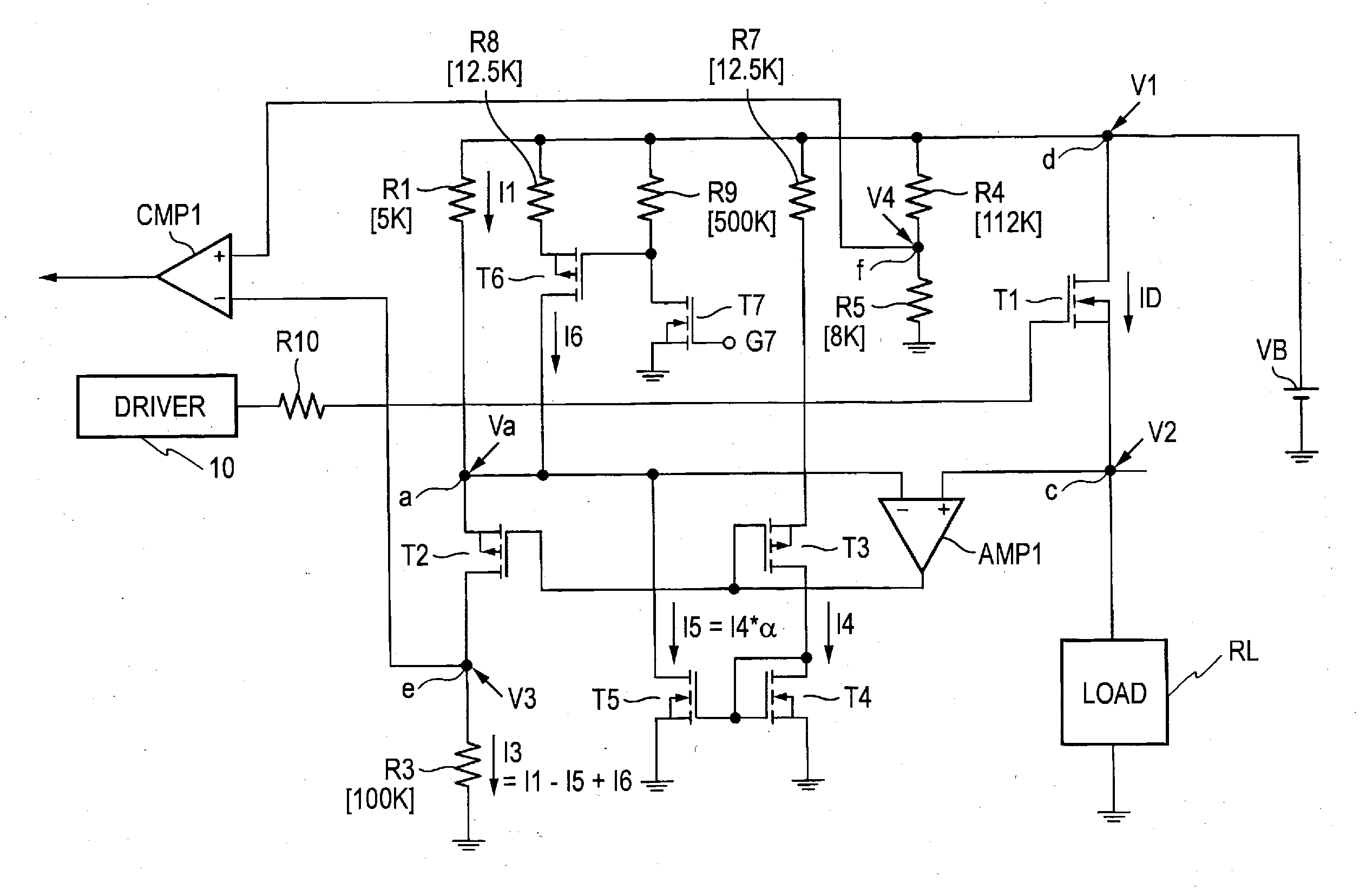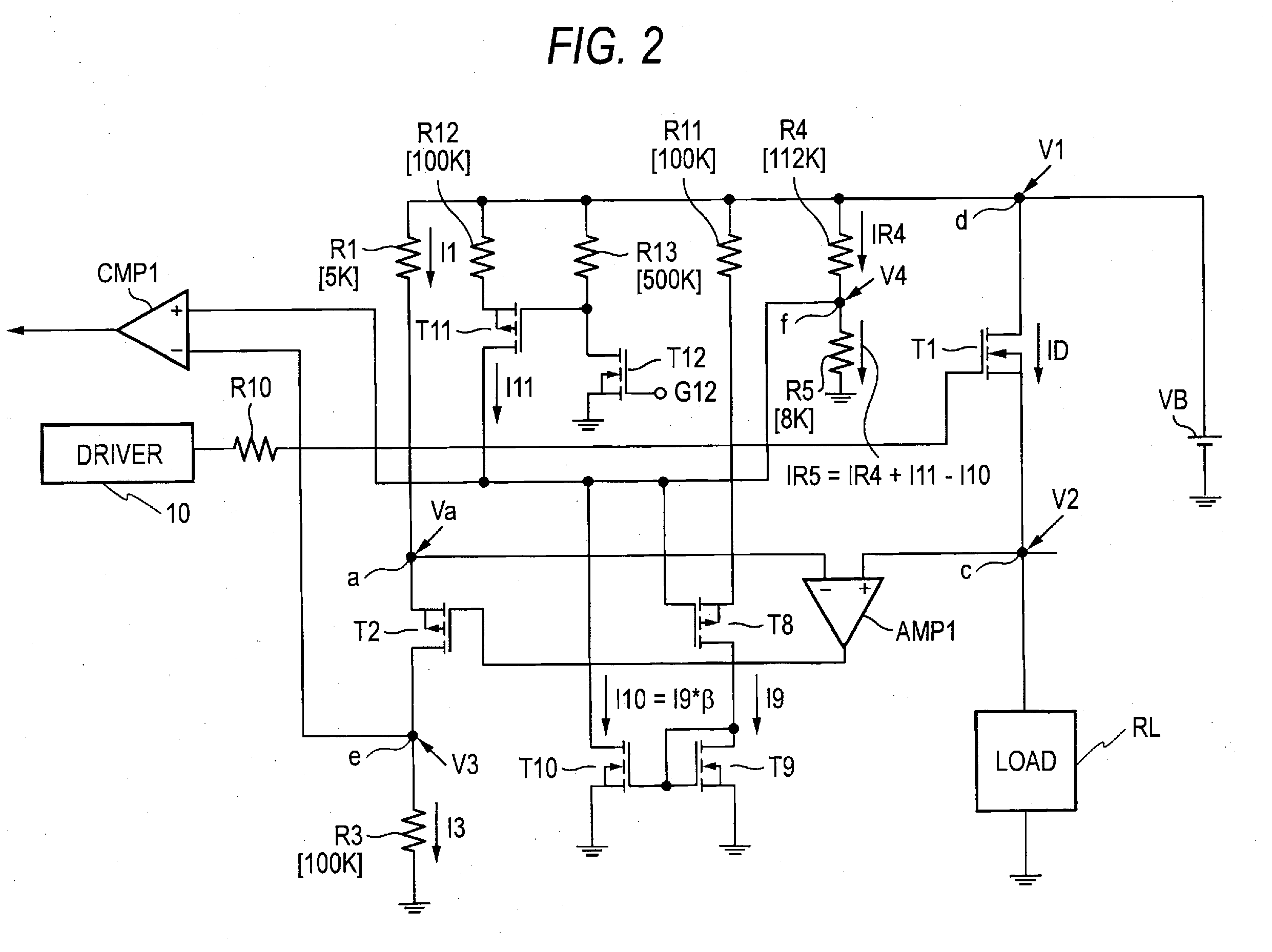Overcurrent protection apparatus for load circuit
- Summary
- Abstract
- Description
- Claims
- Application Information
AI Technical Summary
Benefits of technology
Problems solved by technology
Method used
Image
Examples
first embodiment
[0089]Hereinafter, embodiments according to the invention will be explained with reference to drawings. FIG. 1 is a circuit diagram showing the configuration of an overcurrent protection apparatus for a load circuit according to the invention. As shown in FIG. 1, the load circuit includes a series circuit formed by a battery VB, a MOSFET (T1) as a semiconductor element and a load RL such as a lamp or a motor. The gate (control electrode) of the MOSFET (T1) is coupled to a driver circuit 10 via a resistor R10. Thus, the MOSFET (T1) is turned on and off in response to a drive signal outputted from the driver circuit 10 to thereby switch the load RL between a driving state and a stop state.
[0090]The drain (first main electrode) (point d: voltage V1) of the MOSFET (T1) is coupled to a ground via a series circuit of a resistor R4 (for example, 112 [KΩ]) and R5 (for example, 8 [KΩ]). Further, the point d is coupled to the ground via a series circuit of a resistor R1 (for example, 5 [KΩ]),...
second embodiment
[0128]Hereinafter, the operation of the second embodiment will be explained. Since the source-gate voltage of the transistor T8 is smaller than the voltage drop of the resistor R4, the current I9 is almost proportional to a current IR4 flowing through the resistor R4.
[0129]A current I10 flowing through the transistor T10 is used for correcting the determination voltage V4 and controls the channel width ratio β so as to satisfy the following expression (13).
I10=β*I9 (13)
[0130]The technical concept of controlling the channel width ratio β is same as that of controlling the channel width ratio α in FIG. 1. The actual correcting method using this technical concept will be explained.
[0131]Supposing that a load current to be determining with respect to the overcurrent is IDS1, the IDS1 is flown through the MOSFET (T1). If β is set to 0 and the on-resistance is smaller than a target value due to the deviation ±ΔRon of the on-resistance or the replacement of the semiconductor element (MOSF...
PUM
 Login to View More
Login to View More Abstract
Description
Claims
Application Information
 Login to View More
Login to View More - R&D
- Intellectual Property
- Life Sciences
- Materials
- Tech Scout
- Unparalleled Data Quality
- Higher Quality Content
- 60% Fewer Hallucinations
Browse by: Latest US Patents, China's latest patents, Technical Efficacy Thesaurus, Application Domain, Technology Topic, Popular Technical Reports.
© 2025 PatSnap. All rights reserved.Legal|Privacy policy|Modern Slavery Act Transparency Statement|Sitemap|About US| Contact US: help@patsnap.com



